Why is Angular Perfect for eCommerce Web App Dev...
In the aftermath of the Covid-19 pandemic, several businesses accelerated...
From strategy and app design to development and maintenance, here’s everything you need to know about the mobile app development process.
We have witnessed the fastest ever change in the business landscape since March 2020. Because everyone was now cautious of physical contact, businesses struggled to stay afloat. That’s when mobile apps became more popular than ever and every business today wants to have a digital presence.
However common mobile apps may seem to a person from a non-IT background, the stages of mobile app development are not that simple. If you too are planning to build a mobile app for your business, this blog will help you understand the mobile app development process in detail.
You, as the app owner, also have a role to play in the mobile app development stages. In addition, all the software-related tasks will be taken care of by your development partner.
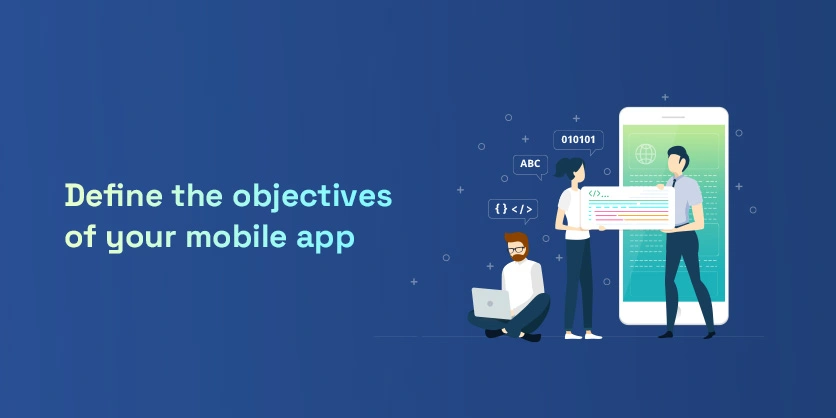
If you don’t know the “why” behind your app, you won’t know how to build a mobile app for your business. Every little feature of your mobile app depends on what exactly you want the app to achieve.
Clearly defined objectives also help all the stakeholders understand what direction the mobile app development process is going to take. Also, if you set measurable goals and objectives for your app, you can easily measure its success too.
If your goal is to strengthen your brand by having a mobile app, you can measure it in terms of the number of downloads and user retention rates.
Your goal could also be to ease communication with the customers. In that case, most of the features of your mobile app would focus on customer experience or customer support.
And if you want to earn revenues from your mobile app, the features would be totally different.
Therefore, it’s vital that you clearly define the objectives of your app before the mobile app development process begins.

At this point, you already know what you want your mobile app to do for your business. But now, it’s time to understand what your potential users are expecting to get from your app.
When it comes to the mobile app development process, most development teams are likely to have some personal biases. What might seem too easy to them might end up confusing the user if not implemented well. There is a vast difference between the mindsets of the users vs the mindsets of the app developers.
So understand how your ideal user thinks, how they operate apps, what kind of app they usually use, and what kind of UX/UI would appeal to them.
To do this, you can leverage data analysis and conduct market research depending on demographics and interests. Here are a few examples of the factors you can use to narrow down your target audience:
Do they live in a western country or an eastern one? Are they metro city dwellers or do they come from small towns? What is the popularity of your vertical in those geographical locations?
Understanding this aspect is important to get the app design and features right. For example, people in the older age group prefer extremely intuitive, simple UX while young adults prefer dynamic UI more.
There are many more aspects that you should consider while understanding your audience. I recommend creating a buyer persona for the best insights on your potential users. This HubSpot article is a great resource on how to create a buyer persona for your mobile app.
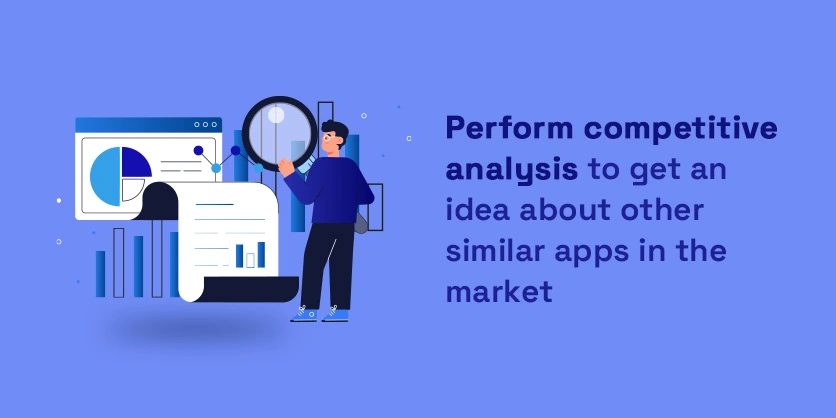
In simple words, competitive analysis is the study of your existing competitors to understand the strengths and weaknesses of their mobile apps. Doing this helps ascertain the viability of your own app idea and where you fit in the market.
If you have done your research well, chances are you already know which apps can potentially be your competitors.
But if you want to find more, just do a simple google search as a customer who is looking for the kind of app you are planning to build. If such an app already exists, that’s your direct competitor. If only other related apps appear, that means you don’t have a direct competitor.
But that doesn’t mean you don’t have any competitors. Your indirect competitors can be anything that keeps the user from using your app. For example, if your app teaches the Spanish language, Netflix is your indirect competitor because it keeps the user from learning Spanish on your app.
Alternatively, you can also use various competitive analysis tools to help you find and analyze your customers.
Basically, before you begin to build a mobile app, see what other businesses like yours are doing.
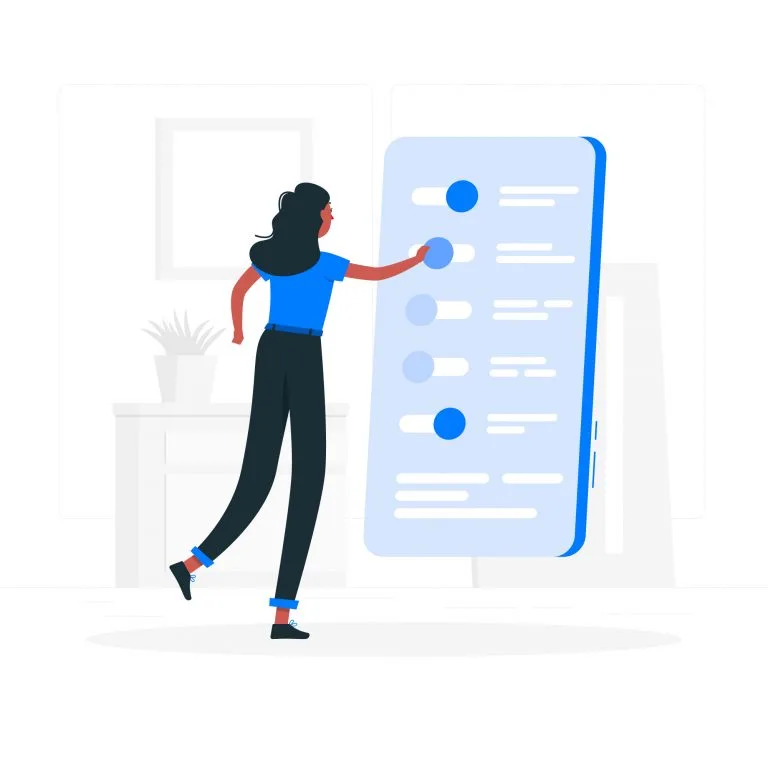
Additionally, you will also have understood the preferences of your target buyers by now.
Combining all this information, zero in on the one core feature that your app must have. Remember that this is going to be the USP of your mobile app.
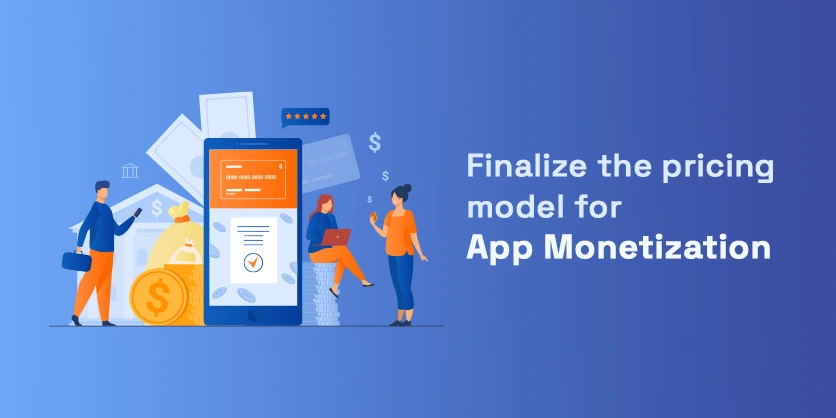
Unless you are building a mobile app for your eCommerce business, you will need a monetization model to well, make money off your app. Again, the pricing strategy for your mobile app depends on your app’s business objectives.
Here are the common app monetization models that you can consider before the mobile app development process begins:
There was a time when selling data collected from app users was considered unethical. However, off late, there has been a monumental shift towards big data. Selling data after procuring permission to access it is no more considered unethical.
Users love the collective digital experiences they get after they have their data integrated across different apps. In return for providing this convenient experience, you can ask for permission to access their names, genders, ages, contact details, etc., and sell it to data analytics firms.
However, this app monetization strategy will yield you high revenues only if you can collect huge, diverse, and reliable data.
The premium pricing model requires a user to pay a certain amount up front, in order to use the app. The user can’t try the app without paying a premium amount. But once they do, there is no limit to how much utility they can derive from the mobile app.
Premium is a very risky pricing model to opt for. Consider choosing premium only when you have established a loyal customer base and aren’t threatened by direct competitors.
The freemium model is one of the most popular app monetization models currently. It’s slightly different from premium but the difference in revenues is huge.
The Freemium model offers a few features of the app for free. If the user likes them and wants to use more advanced features, they can then pay a certain fee (premium amount) for that.
Slack is a great example of a mobile app that offers most features for free and some for a premium fee.
Use the freemium model if your app can hook the users for relatively long periods of time, like Slack. If your app can promise more advanced, highly usable features for a small fee, go for it.
As the name suggests, in-app advertising refers to a monetization model that makes money by playing third-party ads in the app. There are many types of in-app advertising like banner ads, video ads, interstitial ads, etc.
In-app advertising works well only if they are targeted right. So go for this monetization model when you are sure to collect the user data like their demographics and interest areas.
In-app purchases is the safest model to try out if the competition in the market is intense. Under this model, users get to download and use your mobile app for free. Once they become your regular users, you can offer payable add-ons that can make their app experience even more rewarding.
Gaming apps and content-driven apps leverage this model the most.
The subscription model is when a user pays a fixed monthly fee to use the features of your app. You can also combine this model with freemium as Spotify has done.
Subscriptions are the most profitable revenue models for content-heavy apps like OTT platforms or Medium.
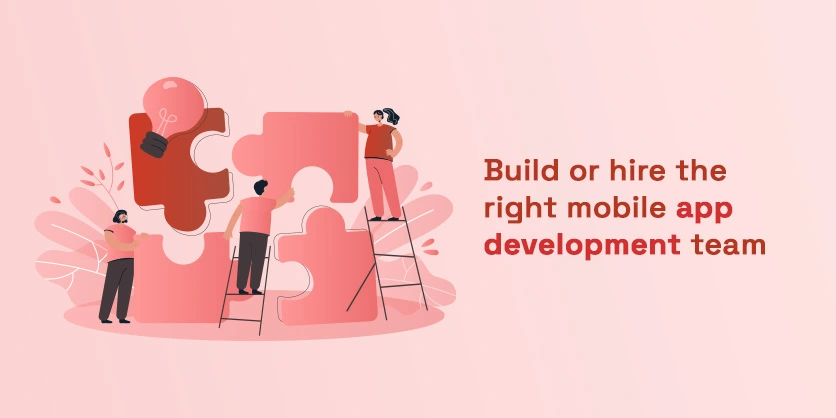
By now, you have done everything that a business owner or the app owner must do. From here on, it’s the responsibility of a development team to carry forward the process of mobile app development.
Before you proceed, remember that app development is neither a short-term nor a very simple process. Mobile app development phases are complex and require expert guidance at each stage. Also, the release of the app doesn’t mean it’s the end of your mobile app development lifecycle.
Therefore, be very cautious when you set out to hire an app development company.
Questions to ask before hiring your mobile app development partner
We, at Space Stem, are committed to delivering efficient, timely, and cost-effective mobile apps to business owners in all industries. If you are looking to hire a leading mobile app development company in India, we would love to assist you. 😊 Contact us to schedule a free consultation call with our mobile app development experts.
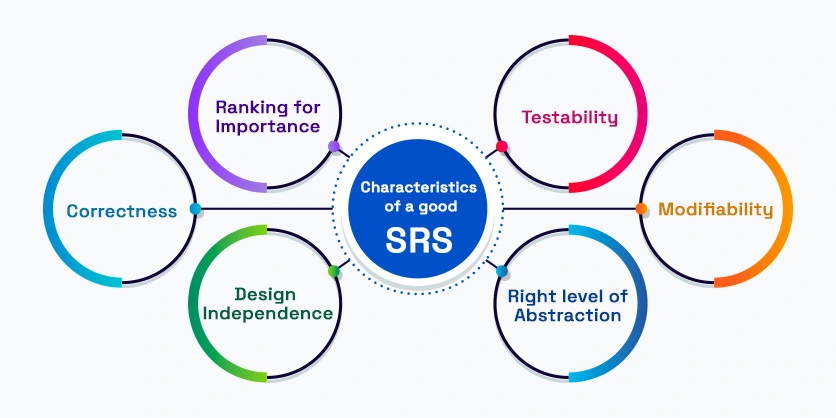
A PMI report concluded that over 47% of unsuccessful projects have poor requirements documentation to blame. Thus, it’s extremely important to prepare a Software Requirements Specification document.
Don’t worry if you don’t know how to do that. In most cases, it’s the development partner that takes care of analyzing and documenting the requirements.
A Software Requirements Specification (SRS) document outlines what your mobile app should look like and how it should perform. Additionally, it also specifies how the user will interact with each part of the app.
The development team first understands your idea and expectations from the app. They study the market and then come up with the requirements based on what you want the app to do.
For example, if you are building a healthcare appointment booking app, your SRS should specify the steps a user will take to book an appointment.
Here, the steps could include:
Now, an SRS also specifies the functional and non-functional requirements of the software that make the above user experience possible.
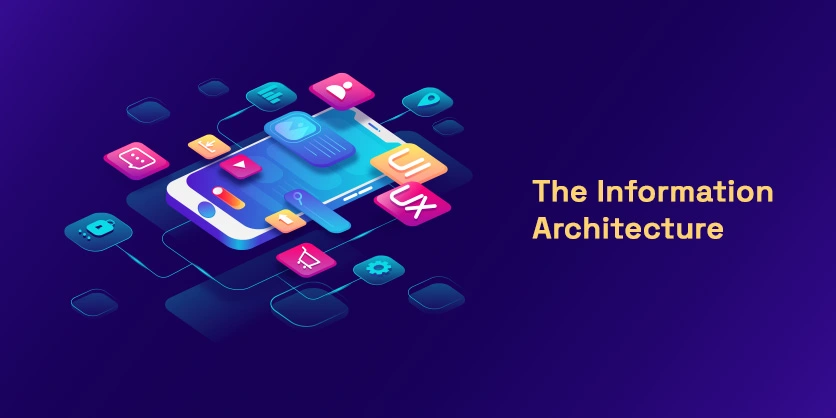
Your mobile app is going to be all about the content on it, whether it’s textual or visual. Let’s suppose the content is really good but what if the user can’t access it easily? That’s where information architecture comes into the picture.
In a mobile app development process, finalizing information architecture refers to defining how you will organize information on your app. Will you take a vertical hierarchical approach, a horizontal one, or a combination of both? Will you base the accessibility on clicks or swipes?
The answers to these questions form the information architecture of your mobile app.
There are many IA approaches that your development partner will evaluate. They will do so keeping in mind the particular objectives of your mobile app and the preferences of your target audience.
Now that the IA is ready, the design team starts building sketches of how each app screen should look like. Usually, this is the design process that most development teams follow:
Sketches (to clarify the concepts) –> Wireframes (to specify the components) –> Prototype (to finalize the interactive elements)
As you can see above, wireframes lie in the middle ground between rough sketches and final prototypes. It’s essentially a low-fidelity representation of your mobile app which is a little more in detail than the sketches. At the same time, they are also not interactive, functional designs.
The following image is a good example of how a mobile app wireframe looks like:
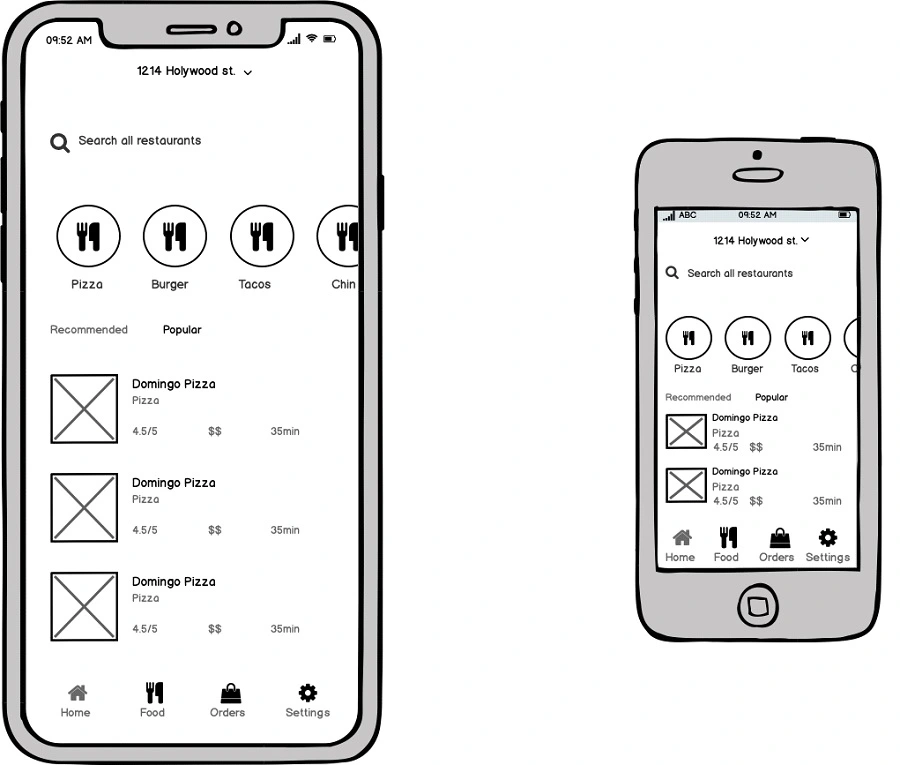
Your development team will create wireframes for different screen types and dimensions. They will also keep the future requirements in mind and build a wireframe that is scalable.
A prototype in the mobile app development process is an interactive design draft of the app that is not yet functional. In simple words, it’s a dummy app that has been created just to showcase how the actual app will function.
Making a prototype doesn’t really require coding every time. In most cases, app designers use various prototype-making tools to come up with quick interactive dummies for your mobile app.
We recommend prototyping before coding for an actual app because prototypes help you eliminate any up-front flaws in the app design. If you come to know those after you have developed your app, it can cost a lot of extra money.
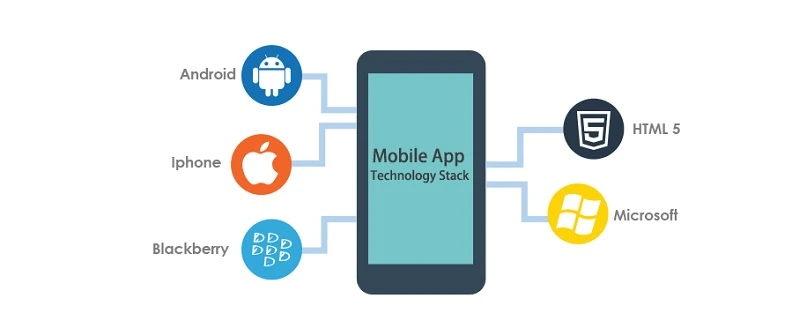
Once you approve the prototype of your app, your development team will then ascertain what kinds of technologies you should use to build your app. The set of programming languages, frameworks, and other technologies a developer uses to build an app is called its technology stack.
At this point, your development team will go back to their SRS. They will get insights into the requirements again and figure out the right platform for your mobile app.
You could either go for native apps for Android and/or iOS or you could opt for cross-platform development.
If you go for Android app development, the Software Development Kit (SDK) will consist of Java/Kotlin as the programming language and Android Studio, including Android developer tools.
In the case of iOS mobile app development, the toolkit consists of Objective C/Swift as the programming language, XCode, and other third-party tools.
If you are going for a cross-platform mobile app development process, your development partner will use a cross-platform framework to build your app. Flutter and React Native are the two most popular cross-platform app development frameworks.
A good, experienced app development company takes an agile, iterative process to development. What this means is that development isn’t a linear process.
The entire mobile app development phase is divided into smaller milestones. An example could be to complete developing and testing the first screen by the end of the second week of the month.
The benefit of this approach is that the developers keep building new components and the testers keep testing them simultaneously. As a result, when a milestone is achieved, the component is fully tested and ready to be deployed.
Your development partner will consistently communicate the progress of each of the app development stages with you.
App deployment basically refers to the process of making the app functional on a web server or any device. In this stage of the mobile app development process, your development partner will deploy the app on the server as well as on the respective app stores.
Mobile apps, or any software for that matter, require backend servers to exchange data and eventually respond to user queries. In simple words, servers are the brains of your mobile app. To make the app functional, your development partner has to deploy the app backend server on a production environment.
If you plan to scale your app in the future, ensure that the team uses a scalable environment like AWS or RackSpace.
Now that all the steps involved in mobile app development are complete, your app is ready to be published on app stores. You can choose to do it in-house or you can ask your development partner to do that too.
Getting a mobile app live on app stores is quite a tedious process. You have to fill out various different forms and ensure your app is ready for release. Moreover, you also have to provide screenshots, videos, and other marketing material.
If everything goes well, your Android app on Google play will be live in a few hours. Your iOS app on the App Store will be live in a few days.
Your association with your development partner doesn’t end at making the app live. A very important aspect of software development is post-launch maintenance.
Once users start using your app, they might come across some glitches while using it. So your team has to ensure those bugs are solved and the functionality remains smooth.
Moreover, the market is always evolving, user needs are always changing. So you will need to work on developing new features and releasing app upgrades.
All of these activities fall under the umbrella of mobile app maintenance.
The mobile app development process is a long, complex process that requires the expertise of various specialists at different stages. As the app owner, you must first strategize the objectives of the app and then shortlist the features accordingly. From there on, find a reliable development partner who can take care of development, testing, and deployment thereon.
The process goes on even after the app is live on app stores. App maintenance and feature upgrades are vital to the app’s success in the long run.
We, at Space Stem, are committed to delivering efficient, timely, and cost-effective mobile apps to business owners in all industries. If you are looking to hire a leading mobile app development company in India, we would love to assist you. 😊 Contact us with your requirements here and our mobile development experts will get in touch with you at the earliest.
In the aftermath of the Covid-19 pandemic, several businesses accelerated...
Technology has made different industries highly productive and efficient.
Web applications are extensively used to improve enterprise...